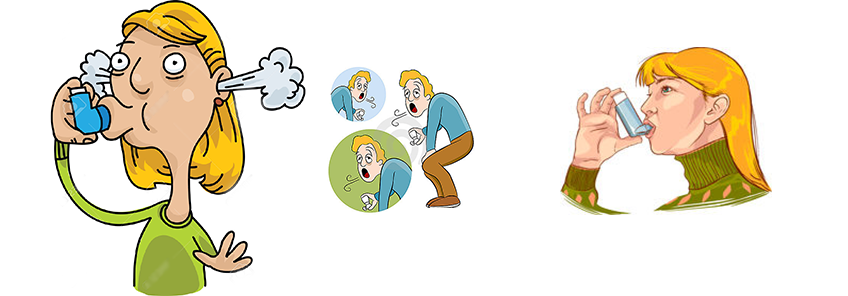Shortness of breath (Dyspnea)

Shortness of breath or dyspnea is an abnormal awareness of own breathing. It is described differently by different people. Some describe it as not getting enough air or feeling suffocated while others describe it as a sensation of chest tightness or inability to breath out completely. Dyspnea occurs when body’s demand for oxygen is not met by normal physiology of breathing. Apart from the normally expected shortness of breath during strenuous exercise, high altitude or obesity, dyspnea is likely a sign of a medical problem. Most cases of dyspnea are due to heart and lung conditions.
Lung conditions causing dyspnea:
- chronic obstructive pulmonary disease (COPD);
- asthma;
- infections of lung pneumonia, tuberculosis;
- croup syndrome in children;
- upper airway obstruction due to tumor, foreign body;
- pulmonary embolism;
- pneumothorax;
- interstitial lung disease, lung fibrosis; or
- Pulmonary hypertension.
Heart conditions causing dyspnea:
- congestive heart failure;
- heart attack;
- Coronary artery disease/angina pectoris;
- heart arrhythmia; or
- valvular heart disease like rheumatic heart disease.
Other conditions:
- Severe anemia;
- Neuromuscular diseases like myasthenia gravis, guillain barre syndrome;
- Poisoning e.g. carbon monoxide poisoning;
- Anxiety/Panic attacks; or
- Severe allergic reactions – anaphylaxis, etc.
When to visit the doctor
You should seek immediate medical attention if:
- you have shortness of breath that comes on suddenly and is severe;
- breathing difficulty is associated with severe chest pain or dizziness; or
- breathing difficulty impairs your ability to function.
You should consult your doctor if you have:
- swelling of your legs and feet;
- audible abnormal sounds called stridor or wheeze;
- breathing difficulty with high grade fever;
- breathing difficulty is severe enough to impair daily living activities; or
- worsening of already diagnosed cardiac, or chronic lung or kidney problem.
Things you can do
- Do not consume any food or fluid during breathing difficulty;
- Stay comfortable, loosen the tight clothing;
- Maintain cross and open ventilation;
- Reduce/avoid anxiety and unnecessary thinking;
- Quit smoking; and
- Avoid chronic exposure to dust and chemical. If you work in a dusty environment, use mask to protect against inhaling injurious particles.
Treatment options
Treatment of dyspnea depends on the cause. Options include:
- COPD and asthma are treated with quitting smoking and using inhaled bronchodilators.
- Anemia is treated with blood transfusion and iron or other nutrient supplementation.
- Respiratory tract infections are treated with antibiotics (when due to bacteria).
- Surgical drainage and antibiotic therapy is needed for pneumothorax and pyothorax.
- Blood thinning medications are used to treat blood clots in the lung.
- Treatment of poisoning with an antidote.
- Removal of foreign body from respiratory tract if dyspnea is caused by foreign body obstruction.
- Anti-anxiety medicines and relaxation therapy for dyspnea caused by extreme anxiety.



Send us your feedback on this article